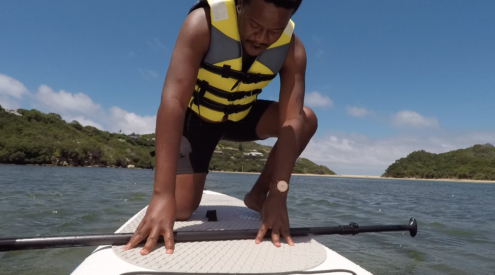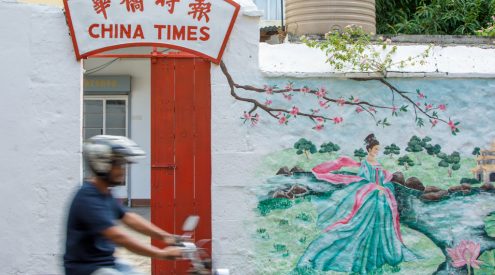You don’t need a wad of dollars to get about in Zanzibar if you’re prepared to travel like a local.
I escaped the cushy, pampered resort life in a dala-dala, a flatbed truck with seats on the back under a metal canopy, used as taxis by the locals. I wanted to visit the Mnarani Turtle Conservation Project in Nungwi on the northern tip of Zanzibar, where my nephew worked as a volunteer last year and lived in the community for three months.
Private taxis are expensive in Zanzibar and tourists can expect to pay around US$60 (about R420) for a one-hour ride. That’s not too bad if you can split the bill four ways, but I was travelling on my own, so left Mapenzi Beach Club on the northeast coast on foot to travel like a local. I waited on the main road for all of five minutes before a dala-dala stopped and I jumped in the back next to women with shopping bags and Masai men wearing beads, red cloth and intricately plaited hairdos.
It cost just TSH500 (about R2,50) to Kisingweni, where I caught a bus almost immediately to Nungwi for another TSH1000 (about R5) and was there in just over an hour, having saved a few hundred rands.
Like most Zanzibarian villages, Nungwi is a run-down collection of small houses and palm-leaf huts where the poverty is obvious. A friendly local chap asked where I was going and “˜just so happened’ to be going the same way. Naturally, he also expected a tip for his friendly assistance.
Mnarani currently has 20 green turtles which cruised around the stone steps of their lagoon for some sea lettuce titbits offered by the multi-lingual aquarium guide, who was stoked to have his friend’s aunt visiting. The two hawksbill turtles, also rescue cases brought in by local fishermen in exchange for payment instead of the cooking pot, didn’t put in an appearance as they’re a lot shyer. (Entrance US$5 or TSH7000 equates to about R35.)
Getting back to Kisingwini on the bus was just a matter of boarding and waiting for enough passengers before the driver decided it was okay to go. At Kisingwini, I got off and waited for a dala-dala going past my hotel “¦ and waited some more as the resort lunchtime buffet passed without me. At last a dala-dala to the right destination arrived, but was crammed full. More bags of mealie meal were piled on the roof and more people boarded. I watched it leave with six people hanging off the back, including the friendly guy I’d been chatting with. Half an hour later, the same again, but with five people clinging to the back.
After two hours at the side of the road, I rethought my strategy, went back to the main road and caught a bus to the previous town (TSH300 or about R1,50) with a connection with the coast and tried my luck there. A cyclist offered me a ride on the back of his bicycle – not such a crazy idea in Zanzibar, where entire families can be seen going out on pa’s bike or scooter. Fifteen kilometres balancing on the back of a bicycle with my tripod and camera backpack didn’t appeal, so I declined the offer.
A private bus driver wanted US$20 (about R140) to take me to my hotel, and then explained that this was a tourist route without dala-dalas. So I caught the bus back to Kisingwini (another TSH300) in the hope of finding space on a dala-dala. Half an hour later my luck changed and I squeezed in next to shoppers with full baskets, only the gaartjie (fare collector just like the Cape Town dudes) hanging out the back. They took me all the way to my hotel driveway for TSH500.
In all, my trip on public transport had cost me TSH3600 (about R18), instead of US$60. It had been an adventure, rubbing shoulders with the locals, chatting where language barriers allowed and given me an insight into their day-to-day lives, enriching me far more than the R400 I’d saved.
At no point did I feel insecure travelling on my own among the friendly Zanzibaris, or standing around in their villages. I highly recommend the experience. Watch out for my article in the July issue of Getaway on good-value packages for budget travellers, romantic couples and families.


















